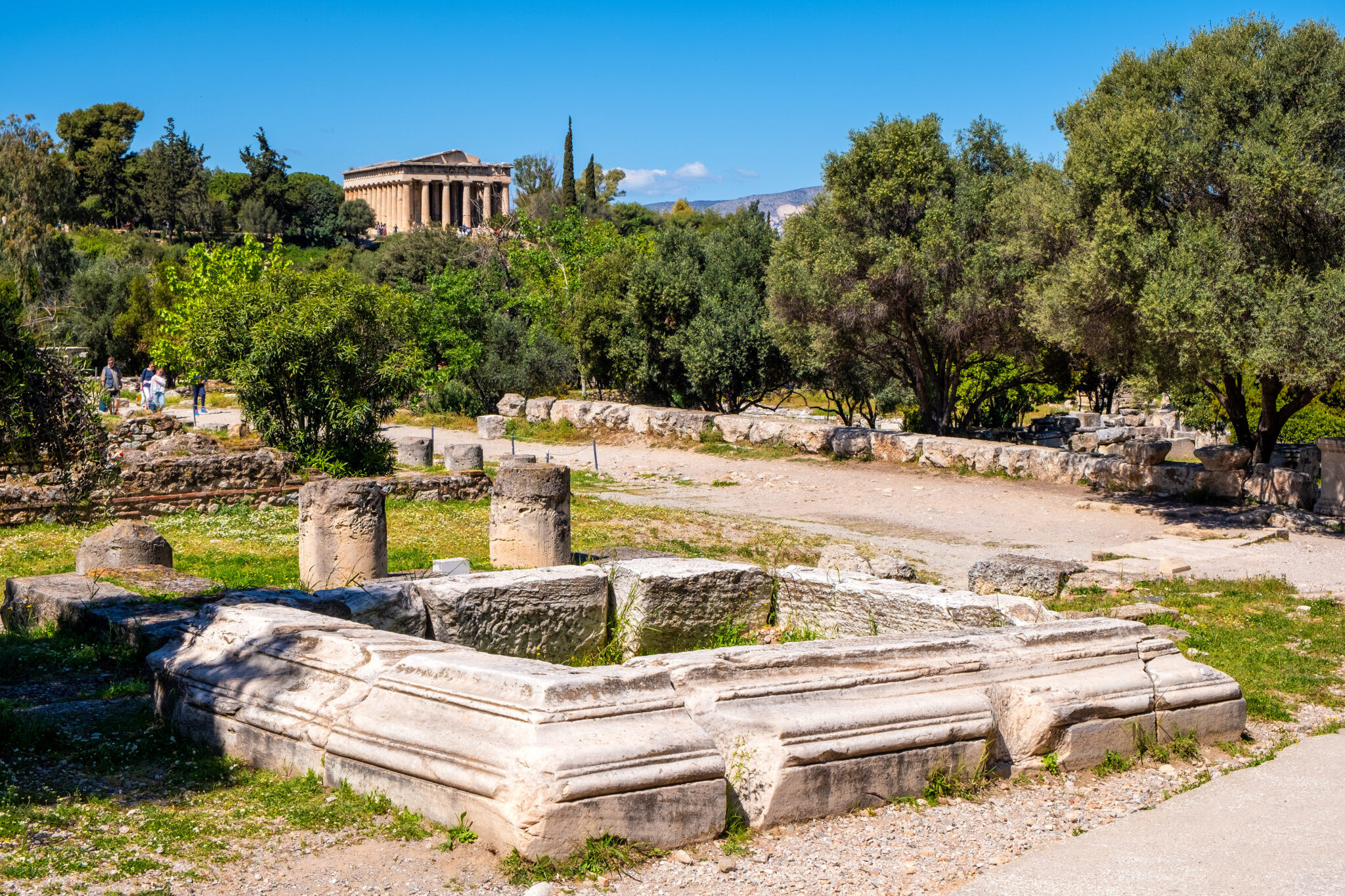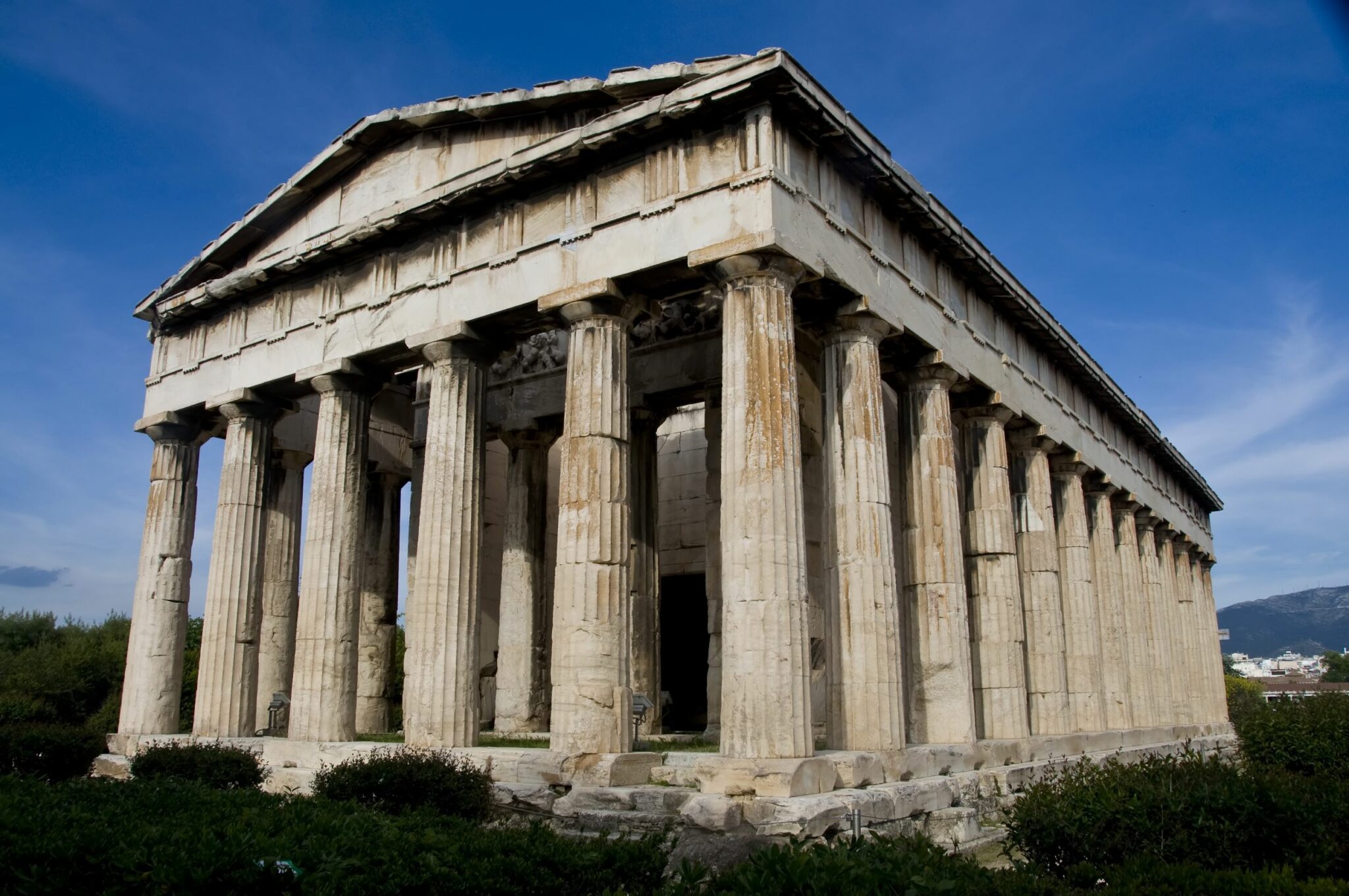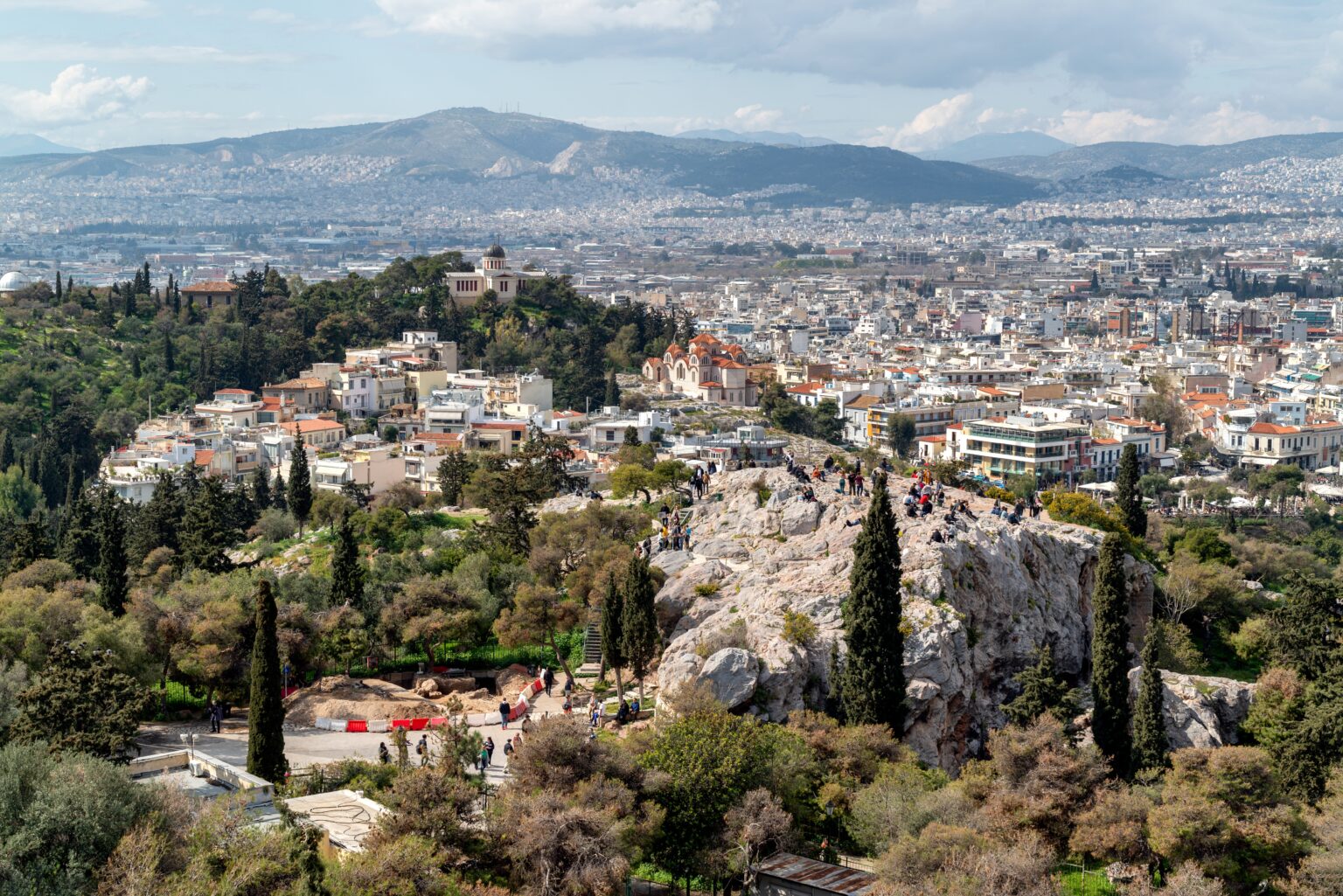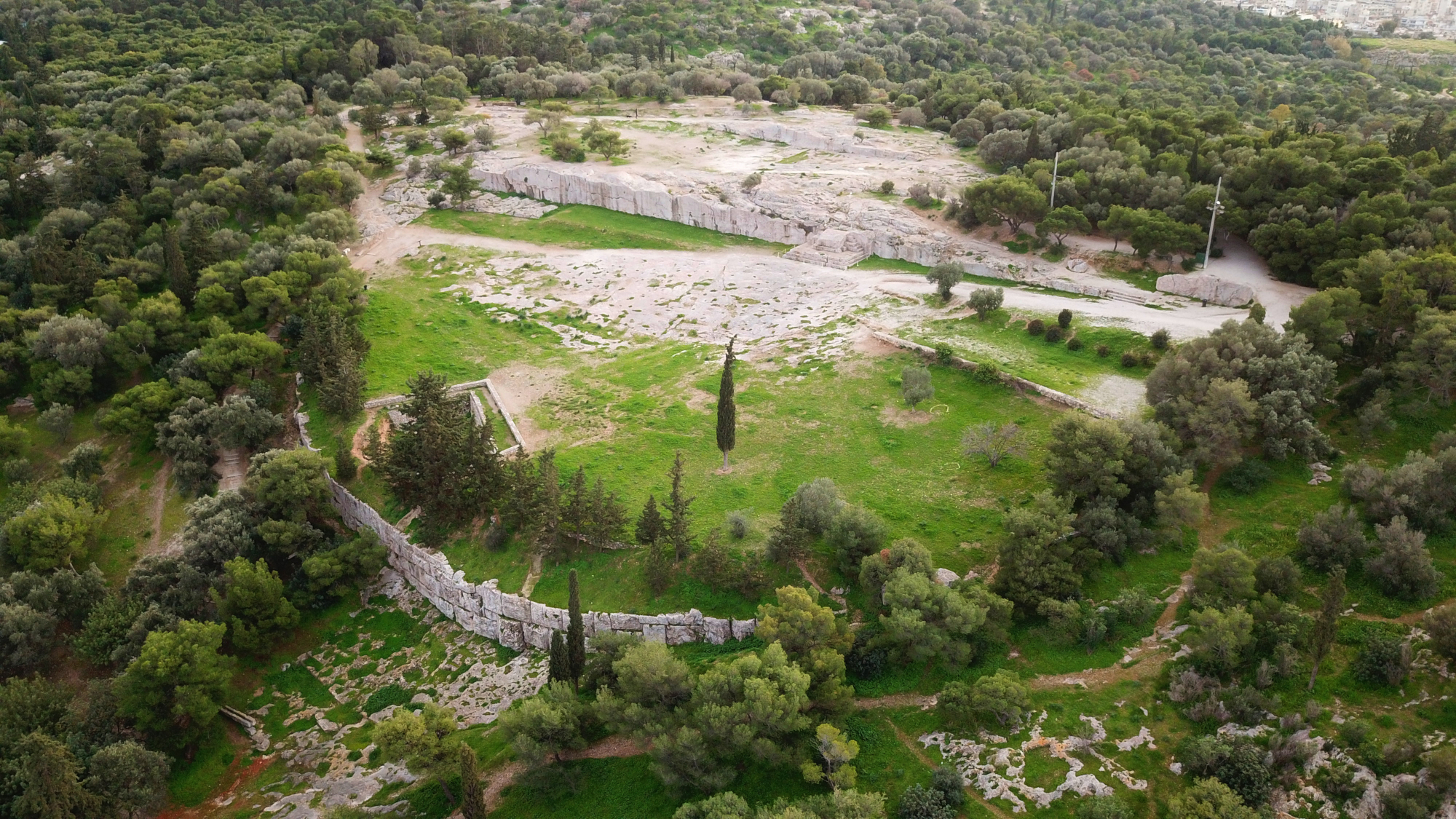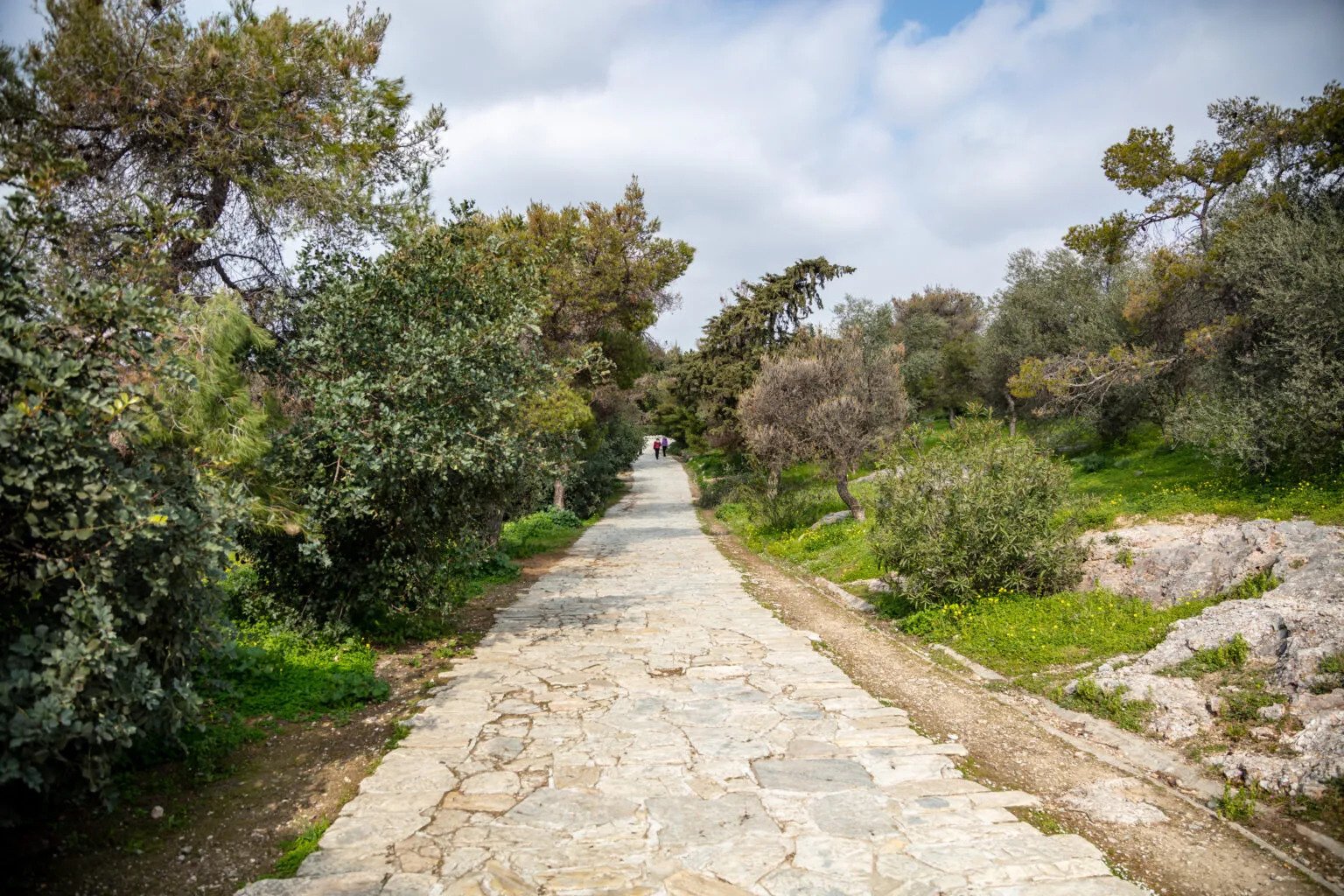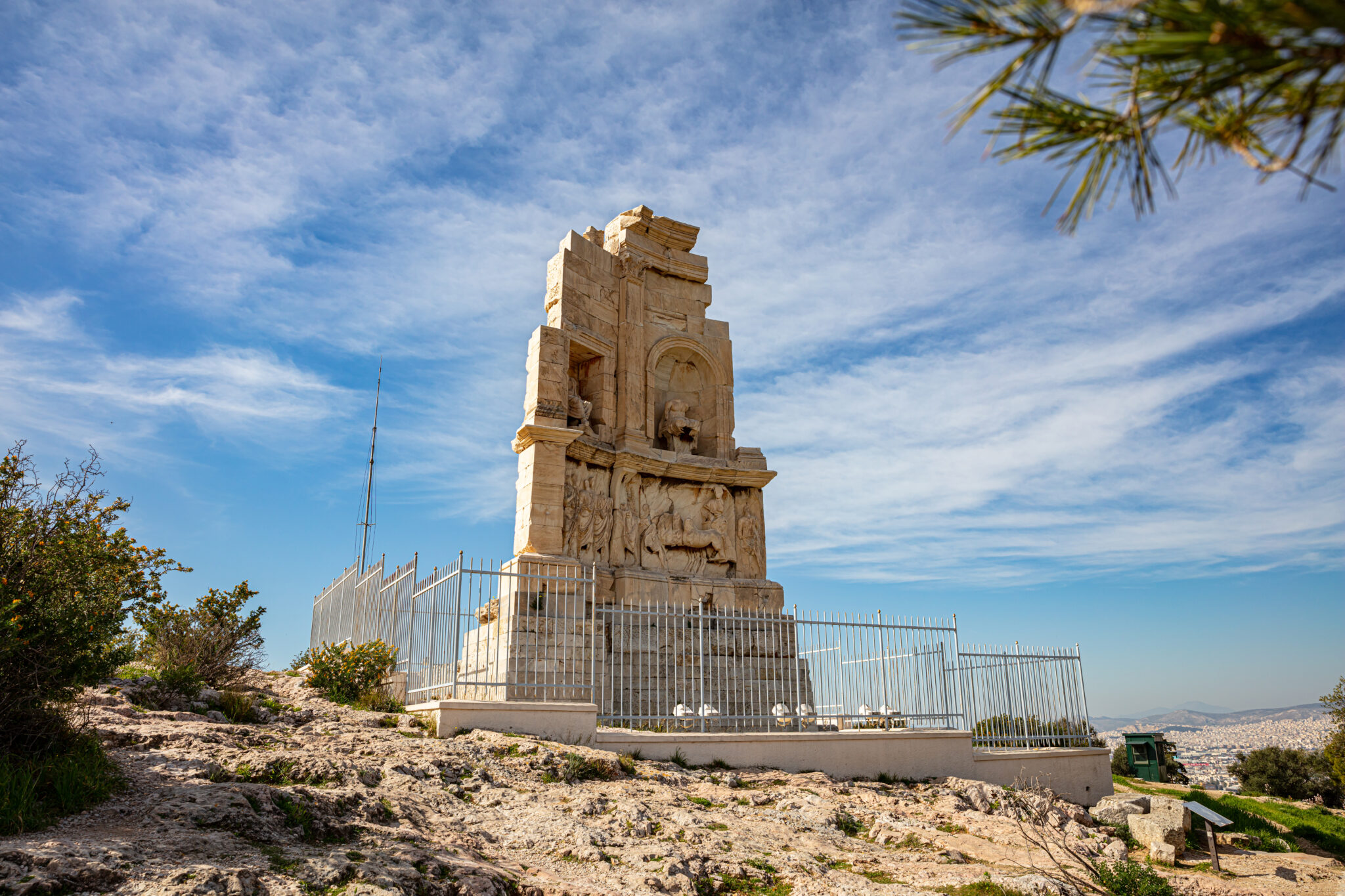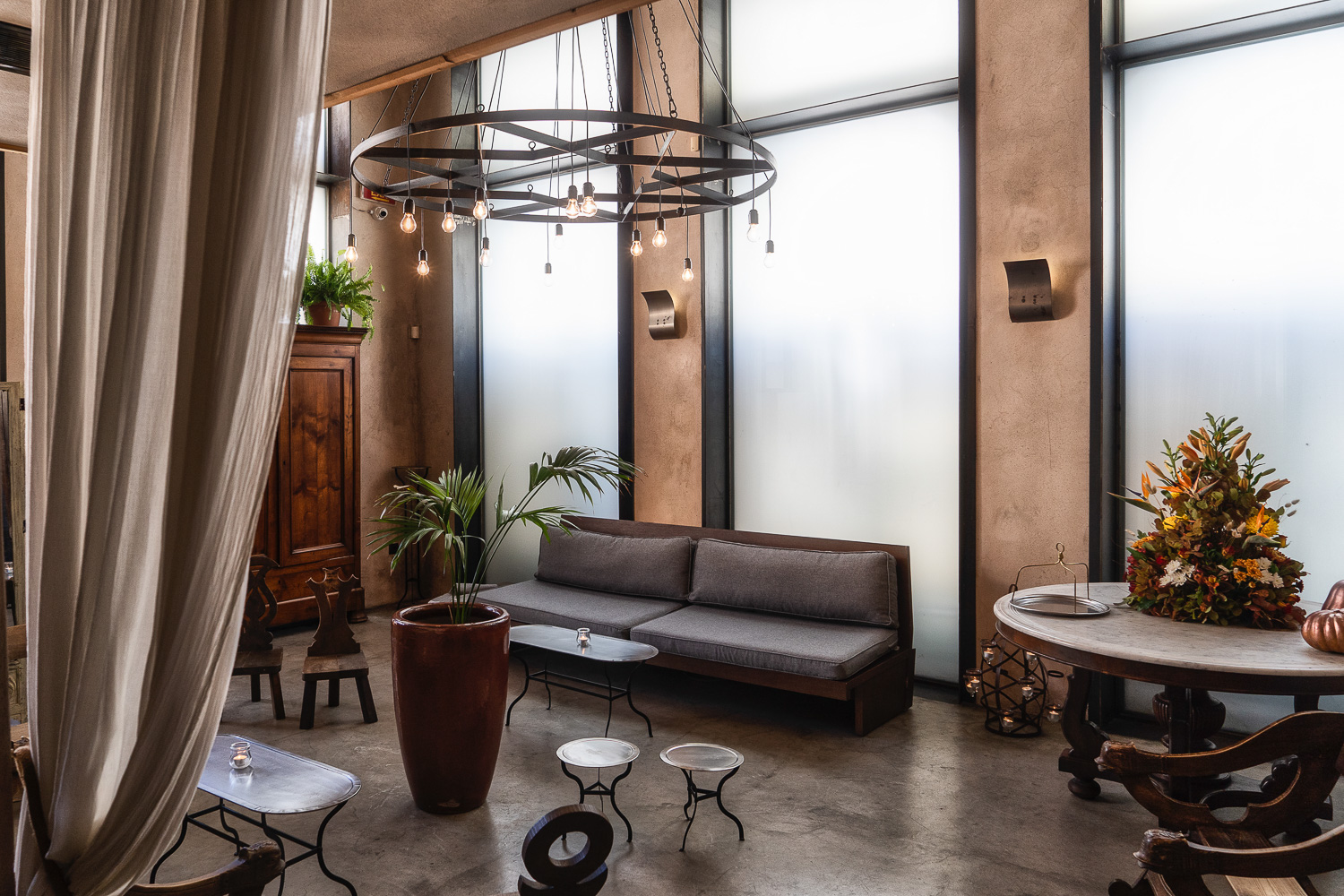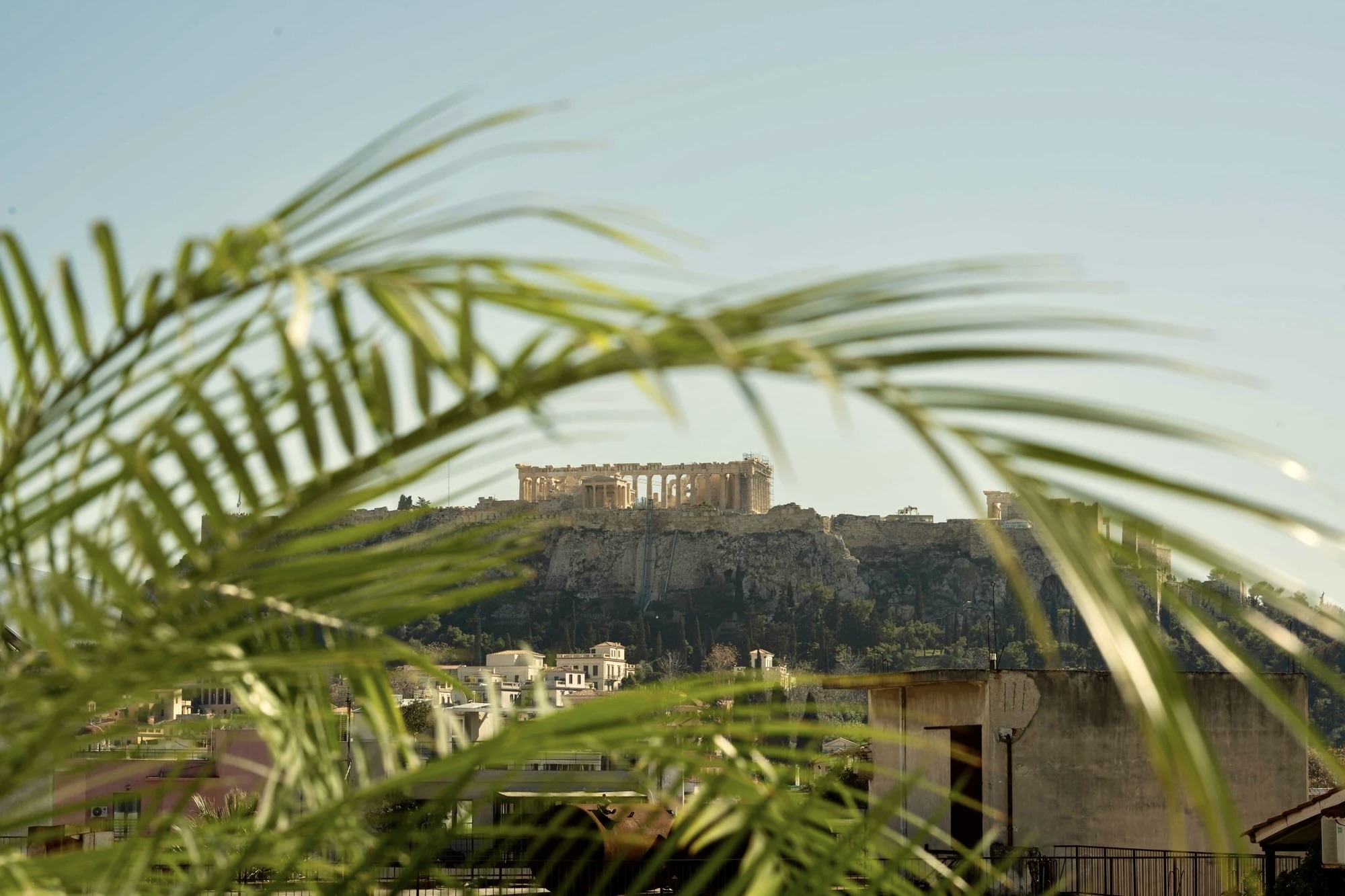In the shadow of the Acropolis, Thiseio is at once elegant and stately with mansion-lined streets and citrus trees scenting the air, but it is also an archaeological adventure park, best imagined as the ancient city of Athens where philosophers and warriors walked. At the home of the first parliament, tread on the stones where great orators argued over the future of the city, then march the Panathenaic Way that led from the gate of Athens to the Acropolis and follow in the footsteps of the ancient Athenian citizens.
Discover early technologies and be amazed at the ingenuity of ancient Greek inventors, then marvel at perfect Doric temples and the classical ruins surrounding them. Relax from the stresses of the city with a Turkish bath, then hunker down with a drink and a snack in one of the great cinemas of the world under a twinkling sky with the gleaming Parthenon as your constant companion.
Ancient Agora and the Temple of Hephaestus
At the northwest foot of the Acropolis, the Ancient Agora (as opposed to the later Roman Agora) was the marketplace of Athens. An open square during classical times, bounded by the city’s major administrative buildings, it was infilled during the Hellenistic and Roman periods. A mecca for traders and merchants, it was here that Socrates lectured and incited the city’s youth to accept his progressive ideas on morality, themes that ultimately led to his own mortality. Plato expounded here, and Zeno discussed the philosophy of the Stoics, named after the six stoas or colonnades of the Agora.
The main path is the Panathenaic Way; running to the Acropolis this was once the most important road in the city. It was the ceremonial route for the annual procession depicted on a frieze in the Parthenon, but nowadays it runs to the southern end of the Stoa of Attalos. Rebuilt in the 1950’s by American archaeologists as a faithful replica of the original, it was donated to the Athenians in 138 BC by Attalos II, king of Pergamus. The original mall, it had 21 shops over two levels and was the main meeting point for Athenians of the period. Today it houses the Museum of the Ancient Agora with an impressive collection of marble statues, columns, ceramics, and weaponry such as a bronze Spartan shield taken as a spoil of war in the battle of Sfaktiria in 425 BC.
On a low promontory called Kolonos Agoraios stands Grrece’s best-preserved Doric temple, the Hephaestion, sometimes known as the Thission because of friezes showing the exploits of Theseus, which later gave name to the greater area. Built just before the Parthenon, it has 34 columns and retains its roof structure substantially intact, while inside, there are the bronze cult statues of Hephaestus and Athena.
The only other surviving building is the Byzantine Church of the Holy Apostles, an 11th century construction that marks the beginning of the Athenian style with signature eight-sided dome and a floor plan in the shape of a cross. Restored in the 1950’s, there are beautiful frescoes discovered under layers of plaster, and the terracotta roof tiles stand out amid the classical masonry strewn around.
Besides temples and shops, there were administrative buildings, schools, workshops, theatres, and houses.
The circular foundations of the Tholos, the principal seat of power are easily seen, while the Mitroon, a shrine to Rhea, mother of the Gods, held the state archives. The Vouleuterion was where the council met, and the Monument of Eponymous Heroes was the Agora’s information centre, where important announcements were hung for all to see. The Sanctuary of the Twelve Gods served as a shelter for refugees and was the point where all distances were measured from.
Excavated since the 1930’s when the Ottoman buildings covering the site were demolished, the area is dissected by the Metro line, a legacy from 1891 when progress was more important than archaeology. Large and open, there are many trees for shade but take water as there are no facilities. The combined archaeological ticket gives access to the Agora, the Acropolis, the Roman Agora, Hadrian’s Library, the Temple of Olympian Zeus, Aristotle’s Lyceum, and the Kerameikos site.
Address: Ancient Agora Adrianou Street, Thiseio, 10555 (Tel.: 21032 10185)
Areopagus
A bare, marble hill next to the entrance to the Acropolis site, Areopagus takes its name from Ares who was spared execution for the murder of Alirrothios, son of Poseidon by a jury of the Gods. Later, Orestes was tried here after killing his mother Clytemnestra and her lover Aegisthus. In preclassical times, Areopagus was where the council of city elders would meet, while in the Roman period Saint Paul was said to have preached the famous ’Sermon on an Unknown God’ here, a fact commemorated by a bronze plaque at the foot of the hill.
With fantastic views over Athens, and particularly the Ancient Agora which lies directly beneath, today Areopagus is a popular meeting point and photo destination. Be warned that countless feet over the millennia have worn the outcrop to a shiny and slippery surface and care should be taken around the edges as there are no safety barriers.
Pnyx
Five hundred metres west of the Acropolis, Pnyx is a rocky plateau surrounded by scrubby hillsides and patchy forest. With fine views across to the Acropolis and Lycabbetus hill, it is dominated by a stone bema, step, cut into the hill. On this platform, Athenians gathered to talk, discuss political ideas and make decisions about matters of state, and, thus, the first democracy in the world was born here. A democracy for men, and only free men too as there was a large slave population, nevertheless, Athenians believed that decision making was too onerous a task for a single ruler, king, or governor, and so all citizens were declared equal and given the right to vote on important political, social and military issues. Founded in the 6th century BC, the bema was later constructed where councilmen elected by the assembly sat, and great orators such as Aristides, Pericles, and Themistocles advanced their arguments. Said to house nearly 20,000 people, as Athens grew in size, Pnyx fell into decline as citizens gathered in the Theatre of Dionysos instead. Easily reached on foot, Pnyx is a 20 minute walk from either Thiseio or Acropolis Metro stations.
Filopappou
Inhabited from prehistoric times, according to Plutarch, this is where Theseus battled with the Amazons. Also known as the Hill of the Muses, Filopappou takes its name from the second century AD monument to Gaius Julius Antiochus Filopappos, a prominent Roman administrator and benefactor.
A marble path laid in the 1950’s to resemble the ancient Athenian way starts just off Dionysiou Areopagitou, the great boulevard that circles the Acropolis. The lovely 16th century Church of Agios Dimitrios Loumbardiaris sits in the foothills with fine frescoes and ornate marble floors. Legend tells that in 1648, a Turkish gunner on the Acropolis prepared to fire on the congregation but he was struck by lightning, saving the worshippers hence the name Loumbardiaris, ‘of the cannon’.
Further on is the so-called Socrates’ Prison, a warren of caves set in the hillside, and said to have been the place where Socrates was imprisoned during his trial in 399 BC, although most classicists refute the theory. During WW2, the Acropolis Museum and National Archaeological Museum hid many important treasures here, sealing up the entrances to prevent looting by the Nazis.
On the far side of the hill there is the Dora Stratou theatre where folk dancing performances are held, while nearby is the National Observatory, an astronomical, meteorological and seismological institute that is the oldest in the Balkans.
A favourite with walkers and strollers, the views over to Piraeus and across the Saronic Gulf are some of the best in Athens, while looking back towards the Acropolis with the Agora at its feet helps to give a sense of perspective and an idea of Athens in ancient times.
Herakleidon Museum
On pretty cobbled Herakleidon street with remnants of tram tracks from the 1950’s, a handsome neoclassical façade shows little trace of the treasures within. One of Athens’ finer smaller museums, it is the lovechild of the Firos family who opened up in 2004 and held exhibitions of many famous artists. Lately, the focus has been on popular science and interactive exhibits based upon the technology of the ancient Greeks. Beautifully created models illustrate sophisticated systems from Santorini, the construction of the Eupalinos tunnel from Samos, and the roads and bridges of Mycenae that are still in use 3,500 years later. A section is dedicated to how the Parthenon was constructed, while the second floor shows the ancient Greeks’ love of fun and play with various automata and primitive robots. Finally, the Antikythera Mechanism is explored, from its discovery to its reconstruction, and context is given from other ancient astronomical instruments that measure time and distance.
In the shade of the Acropolis, Herakleidon Street has many fine restaurants and the museum can be included in a morning of exploration and a stop for lunch. Moreover, on Apostolou Street, 150 metres around the corner, another fine building houses a tribute to the Trireme, the ancient Greek fighting ship, and has displays of other great weapons such as catapults, cannons and flame throwers.
Address: Herakleidon Museuem Herakleidon 16, Thiseio, 11851 (Tel.: 21034 61981), www.herakleidon-gr.org
Cinema Thission
Is this the best located open air cinema in the capital? Many visitors think so, as do CNN Travel who voted it the best cinema in the world. Delightfully retro, the garden setting is green and lovely. Established in 1935, it rapidly became the city’s favourite cinema. As the lights dim and the film begins to play on the big screen the magic unfolds; scents of jasmine and buttery popcorn mingle on the summer air, and the chirrup of cicadas plays along with the soundtrack. However, it is the illuminated Acropolis that keeps pulling our attention away from the film. A riveting backcloth to the cinema, seemingly within touching distance, the Parthenon, the leading lady of the Athens skyline, glows golden against an indigo sky sprinkled with stars.
Open from spring until autumn there are two films shown per night, mostly Hollywood classics and selected latest films are screened, generally in English with Greek subtitles. Alongside the usual hotdogs, canteen offerings include handmade cheese pies, smoked fish roe, and sweet-sour cherryade. If you are in town for more than a couple of nights, head down to the cinema for one of the most memorable evenings Athens has to offer.
Address: Cinema Thission Apostolou Pavlou 7, Thiseio, 11851 (Tel.: 21034 20864), www.cine-thisio.gr
Hammam Baths
With its roots in ancient Greek and Roman times, the Hammam focuses on the element of water to promote beauty, wellness and balance. Popularised during the Ottoman era and throughout the empire, it is one of the oldest surviving bath traditions in the world. A wide range of treatments is available from the traditional hot steam bath to full body massages that use ancient techniques with brushes, essential oils and cupping.
The treatments are based in the hararet, the hot room, with its heated marble hexagonal centre table and domed ceiling. As the temperature rises, pores are unclogged, toxins are secreted, and tensions begin to fall away. An invigorating exfoliating body scrub, washed with clouds of foamy olive oil soap and rinsing completes the cleansing process. Follow up with a facial, a body treatment, or just relax with a tea and Turkish delight sweet for a unique experience in the heart of Athens.
Address: Hammam Baths Athens Melidoni 1, Thiseio, 10553 (Tel.:21032 31073), www.hammam.gr
Read also:
Athens: 5 of the Best Thiseio Cafés and Bars
Petralona: The new and old face of the central neighbourhood



